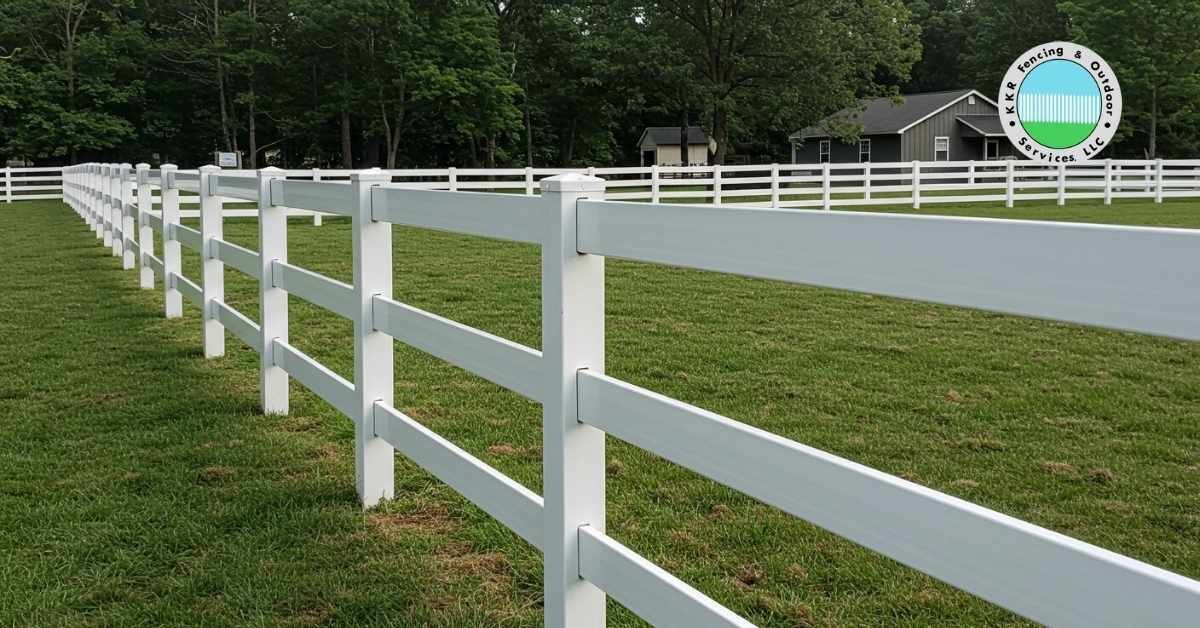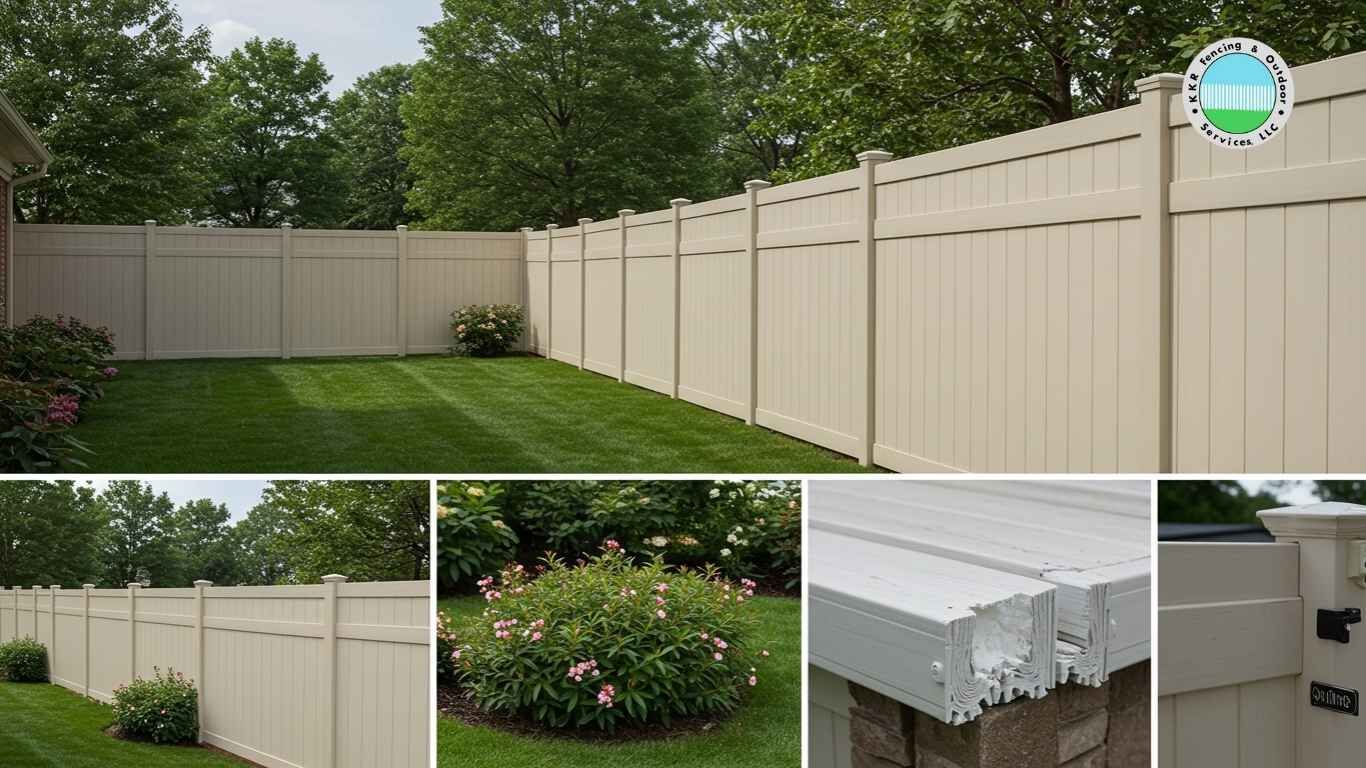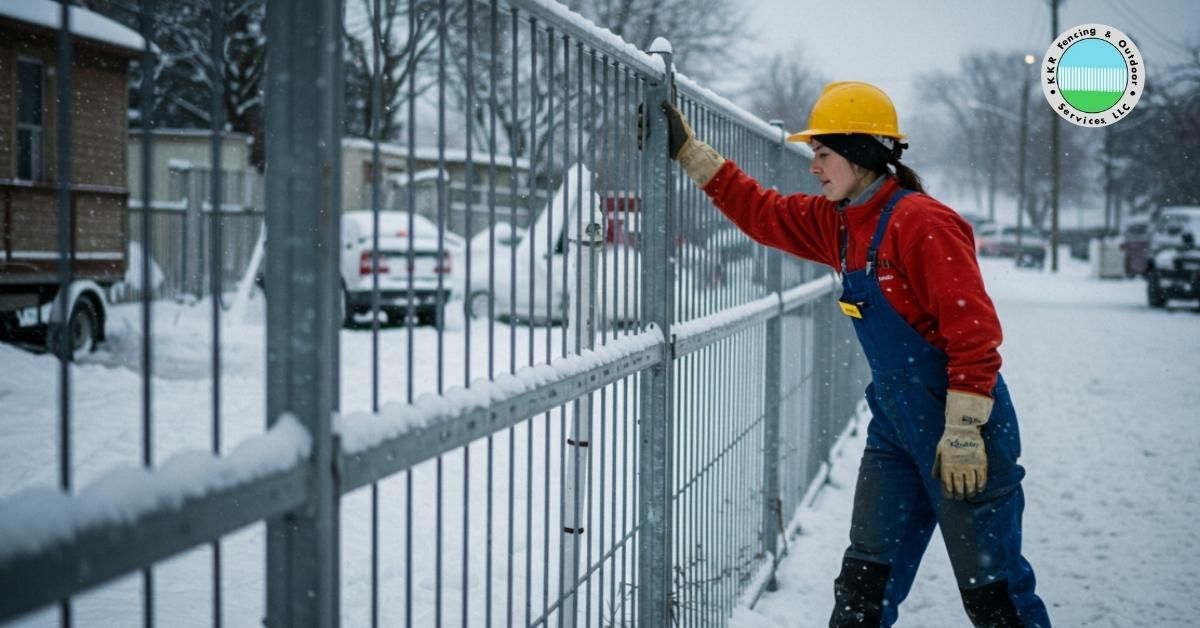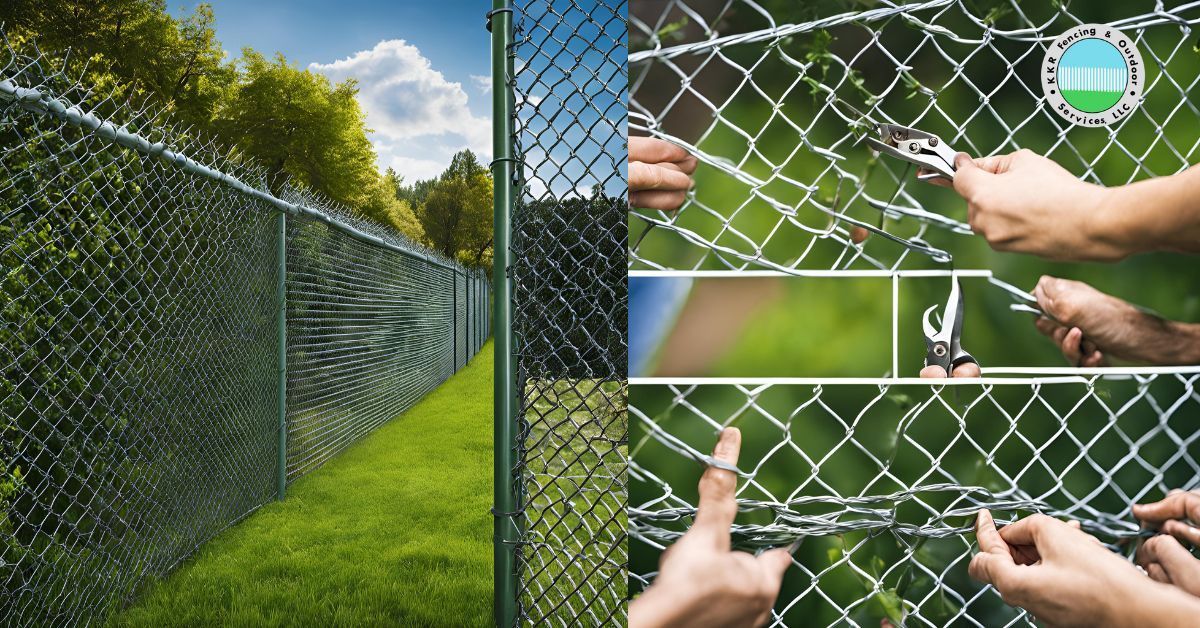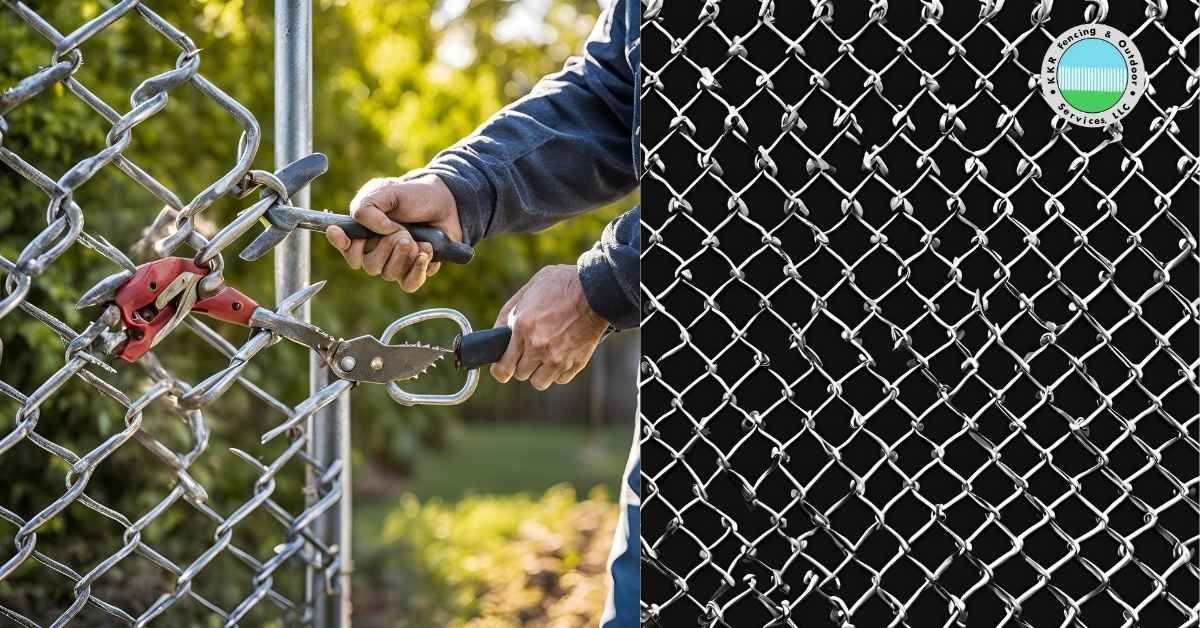Get Started On Your Fence Project | Call Today for a FREE Estimate
Can You Paint Vinyl Fence
Vinyl fences are a popular choice for homeowners due to their durability, low maintenance, and attractive designs. However, there may come a time when you want to change the look of your vinyl fence, whether to match a new house color, update the aesthetic, or provide additional weather protection. This article explores whether you can paint a vinyl fence, the benefits and challenges involved, and provides a comprehensive guide to help you achieve the best results.
While you can paint a vinyl fence using the right products and preparation, it is important to be aware of potential challenges such as adhesion issues and increased maintenance.
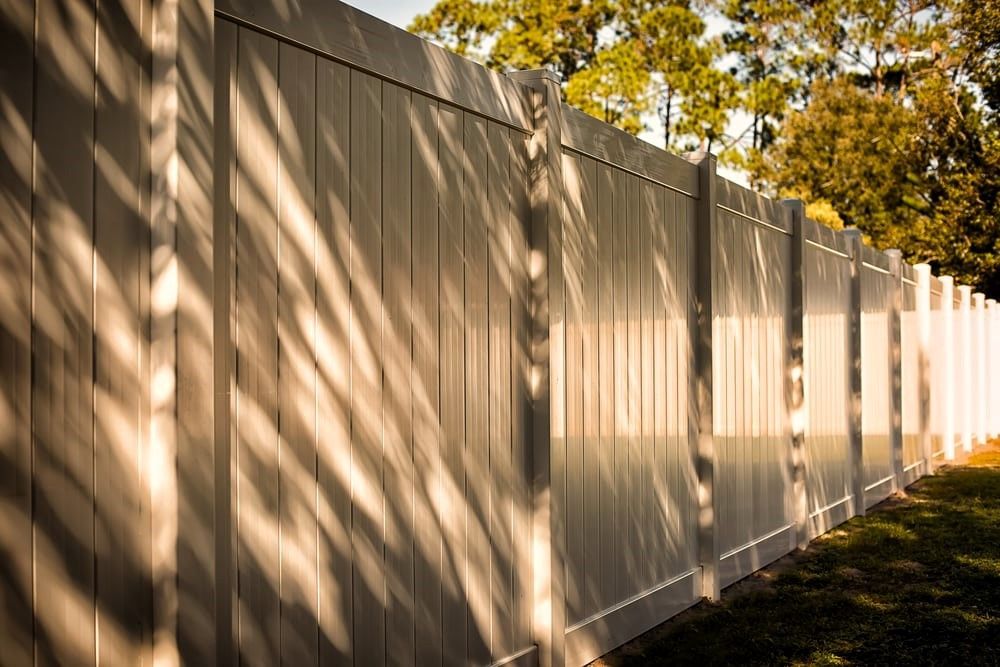
Understanding Vinyl Fences
Material Characteristics
Vinyl fences, made from PVC, are known for their long-lasting nature and minimal maintenance requirements. Unlike wooden fences, vinyl does not chip, crack, or splinter. This makes them an excellent choice for withstanding various weather conditions, particularly in areas like the Pacific Northwest that experience all four seasons.
Benefits of Vinyl Fences
Vinyl fences enhance the aesthetic appeal of any home with their clean lines and variety of designs. They are resistant to weather-related damage, requiring only occasional cleaning with a garden hose or pressure washer to maintain their appearance.
Why Consider Painting a Vinyl Fence?
Aesthetic Enhancement
There are several reasons you might want to paint your vinyl fence. Perhaps the existing color no longer matches your home’s exterior after a repaint, or maybe you purchased a home with a vinyl fence color you dislike. Painting can offer a fresh look and new vibrancy to your fence.
Weather Protection
While vinyl fences are durable, adding a layer of paint can provide extra protection against the elements, potentially extending the lifespan of the fence by preventing minor wear and tear.
Challenges of Painting Vinyl Fences
Adhesion Issues
One of the main challenges with painting vinyl fences is that paint does not adhere well to the non-porous surface of vinyl. This can lead to peeling and flaking over time, making the fence look worse than before it was painted. Even paints specifically designed for vinyl can eventually peel off.
Increased Maintenance
A primary benefit of vinyl fences is their low maintenance. Painting the fence transforms it into a high-maintenance item, requiring regular touch-ups and repaints to keep it looking fresh and vibrant.
Potential Damage
Painting can damage the surface of the vinyl fence and may void the manufacturer's warranty. It’s crucial to check any existing warranties before proceeding with painting.
Preparing to Paint Your Vinyl Fence
Choosing the Right Paint
For painting vinyl fences, it is essential to use acrylic-based paints or vinyl-safe paints. These paints contain urethane and acrylic resins, which help the paint adhere to the vinyl and flex with temperature changes. Light colors are recommended as they prevent the vinyl from warping due to heat absorption.
Cleaning the Fence
Before painting, thoroughly clean the vinyl fence to remove any dirt, grease, or mold. Use a power washer or garden hose along with a scrub brush. Ensure that the fence is completely dry before proceeding.
Repairing Any Damage
Inspect the fence for any cracks or holes and repair them using vinyl repair kits available at home improvement stores. This ensures a smooth and even paint application.
Priming the Surface
Apply a primer specifically designed for vinyl. This step is crucial as it helps the paint adhere better to the non-porous surface. Follow the manufacturer’s instructions for the best results.
Step-by-Step Guide to Painting a Vinyl Fence
Gathering Supplies
You will need acrylic-based or vinyl-safe paint, primer, a paint sprayer (optional), paintbrush, and roller. Ensure you have all the necessary supplies before starting.
Applying the Paint
For an even application, use a paint sprayer or roller. Apply the paint in consistent brushstrokes, working in small sections to prevent the paint from drying unevenly. Ensure each coat is smooth and even to reduce streaks.
Curing the Paint
Allow the paint to cure for at least 24 hours before using the fence. This ensures that the paint adheres properly and provides a durable finish.
Alternatives to Painting
Changing Fence Surroundings
If painting is not a feasible option, consider enhancing the fence's surroundings. Planting shrubbery or climbing vines can add natural beauty and hide the existing color of the fence.
Installing a New Fence
If you are dissatisfied with the color and painting is not desirable, consider installing a new fence in your preferred color. This might be a more cost-effective and maintenance-free solution in the long run.
Conclusion
Painting a vinyl fence can revamp its appearance and provide additional protection against the elements. However, it comes with challenges such as adhesion issues, increased maintenance, and potential surface damage. Proper preparation and using the right products are crucial for a successful paint job. Alternatively, enhancing the surroundings or installing a new fence are viable options to consider.
FAQ Section
Can you paint a vinyl fence?
Yes, you can paint a vinyl fence using the right products and preparation. It’s important to use acrylic-based or vinyl-safe paints and to properly clean and prime the surface to ensure the paint adheres well.
What kind of paint do you use on a vinyl fence?
Acrylic-based paints are recommended for vinyl fences. These paints contain urethane and acrylic resins, which help the paint adhere to the vinyl and flex with temperature changes. Brands like Benjamin Moore, Sherwin-Williams, and Behr offer vinyl-safe paint options.
How do you prepare a vinyl fence for painting?
Thoroughly clean the fence with a power washer or garden hose to remove dirt, grease, and mold. Repair any cracks or holes with vinyl repair kits. Apply a primer specifically designed for vinyl to ensure better paint adhesion.
Is it necessary to prime a vinyl fence before painting?
Yes, priming is essential for ensuring the paint adheres properly to the non-porous vinyl surface. Use a primer designed specifically for vinyl to achieve the best results.
What are the alternatives to painting a vinyl fence?
Instead of painting, consider enhancing the fence's surroundings with plants or installing a new fence with the desired color. These alternatives can provide a fresh look without the maintenance required by painting.
For reliable fencing services in New York, visit KKR Fencing NY.
If you’re looking to enhance your website’s SEO, connect with our partners at Pro Growe.
Call Now for a Free Estimate
We serve clients In Delevan, East Aurora, Erie County, Buffalo, NY And Beyond.
Nearby Location We Serve
Niagara Falls | Delevan | East Aurora | Erie County | Sanborn | Wheatfield | Tonawanda | Lockport | Basom | Indian Falls | Pembroke | Corfu | Darien Center | Batavia | Alexander | Attica Alden | Clarence | Warsaw | Arcade | Houghton | Springville | Gowanda | Dunkirk | Irving | Hamburg | Orchard Park |Blasdell | Amherst | Cheektowaga
All Rights Reserved | KKR Fencing & Outdoor Services LLC
